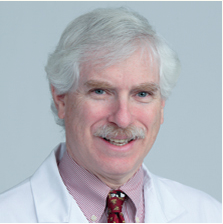What Today’s New Primary Care Physicians Want in a Job
Is your private practice or medical group the kind of place where newly minted Primary Care Physicians will want to accept a job? That depends on whether or not you’re offering physician jobs that acknowledge and accommodate their needs. Today’s physicians are a different breed. And if anyone knows what drives them, it’s George Lowe, M.D., a retired physician and the medical director for Maryland Family Care, Mercy Health Services.
Today, U.S. hospitalists are increasing in numbers while family practice physicians are dwindling. But Dr. Lowe remains a firm believer in the value of private practice and continuity of care. That’s why he strives to make Maryland Family Care—a group of Board-Certified primary care doctors—as supportive as possible for new M.D.s. We talked with Dr. Lowe last week, and he shared his insights on what motivates today’s young family practice physicians, and how physician recruiters can address those needs.
Salary
These days, student loans plague all new graduates, but especially if they attended medical school. With tuition running anywhere from $50,000-70,000 per year, most new physicians start their career with hefty debt—and the desire to pay it off quickly.
“Some people finishing medical school are faced with two hundred to four hundred thousand dollars worth of debt,” says Dr. Lowe. “Most folks don’t want to spend the next twenty years or so trying to pay that off. It’s very difficult. With that kind of debt burden, salary takes on an even greater import for many new physicians.”
To address that concern, the team at Maryland Family Care ensures their salaries are competitive and that new physicians will be financially supported for the first few years.
“We want to take salary off the table if we can,” says Dr. Lowe. “We offer a very competitive salary and a great bonus potential for folks. And we guarantee the salary. We know that on day one, new physicians will be lucky to have one or two patients come see them, but we’ll be able to support them for at least two years until they have reached the point where they are at least breaking even, if not making a bonus.”
Flexible Schedules
Lifestyle, quality of life, and flexible hours are extremely important to today’s young physicians, says Dr. Lowe.
“Now that we have parity in the medical workforce between men and women, many of the women coming in as new physicians are of childbearing age,” he says. There are children and families to consider, so flexibility is very important in their choices.”
With a nod to hospitalist-style scheduling, Dr. Lowe says his team lets prospective candidates know that their physicians group aims to allow somewhat flexible hours for new physicians.
“We try to neutralize the flexibility issue,” he says. “We are sympathetic to time off, sympathetic to folks who need to work only part time. It makes it a little more difficult for us, but we think it’s important that we go down that road as well.”
Not Taking the Job Home
Hospitalists tend to leave their work at the hospital, whereas primary care physicians take their beepers home and keep their cell active.
“Even if you’re not on call every single night—which I don’t think anyone is anymore—you at least have to take your calls, and you have to be concerned about your patients,” says Dr. Lowe. “They’re your patients. With hospitalists, they’re just your patients for a shift, and after that they’re somebody else’s patient for the next shift.”
Taking patients’ calls night after night can certainly lead to burnout, and Dr. Lowe’s practice lets candidates know they’ll have backup.
“We try to avoid burnout by having an adequate staff so that nobody has to take a weekend call or a night call more than once a month, or every six weeks,” says Dr. Lowe. “When I first went into practice, I was twenty-four/seven by myself, which was terrible. And it does lead to burnout. So, with the way we’ve constructed our clinics, we try to avoid that.”
Fewer Ancillary Duties
The fourth factor that new physician candidates keep in mind when considering new jobs is something Dr. Lowe calls “the hassle factor.”
“That involves all the work that a primary care physician has to do that he or she doesn’t get paid for. Getting authorization for medication, getting authorization for an MRI, getting authorization for getting a patient to see a specialist, filling out forms for durable medical equipment, for family medical leave, for disability insurance, and on and on and on. These are the hassle factors, the paperwork factors that hospitalists don’t have.”
They key to addressing ancillary duty concerns among candidates is, once again, by offering backup.
“We try to take the hassle factor off the table by providing a robust administrative staff to handle the business aspects of running a practice,” says Dr. Lowe. “It’s mandatory nowadays with the insurance companies. You have to be adept at dealing with hundreds, if not many hundreds, of insurance plans and the other things that go into running a small business. We try to take the hassle factor off of our physicians’ backs.”
Lifestyle Benefits
Today’s new physicians aren’t just looking for a steady job with excellent salary and a supportive environment, they’re also looking for benefits and perks.
“We offer a very generous benefit package with time off, and time off for education,” says Dr. Lowe. We also have created a contractual model that basically mimics what we used to call private practice, which in another fifteen or twenty years will just be an archaic terminology. But what we tell candidates is, after your first couple of years of guaranteed salary, whatever you make, after you pay your overhead, whatever is left is yours to keep. In that model, an individual can work as hard, or not, as is necessary for them to maintain some type of balance.
Naturally, the harder a physician works, the more they will earn. But, in an effort to embrace the different scheduling requirements of today’s physicians, Dr. Lowe leaves that decision in the hands of the physician.
Collegiality
When recruiting for new physician jobs, Maryland Family Care is up against considerable competition, including other health systems and practices who are desperate for primary care physicians. One of the thing that sets Dr. Lowe’s facility apart, he says, is collegiality.
“We have, under one roof, all of our specialists,” he says. “So that addresses the fear of not knowing a particular subspecialty in depth, which is a concern of young doctors who don’t have a wealth of experience. Textbooks and things are fine for the first couple of years of med school just to learn the lingo, but after that it’s experiential, apprenticeship learning. And we offer that.”
As an example, Dr. Lowe says that if a new physician in his facility sees a patient with a condition that is not immediately identifiable, he or she can get second, third, and fourth opinions (and more) from colleagues.
“That kind of support is very appealing to folks who are coming out of academic institutions where specialists are hanging off the rafters,” he says.
Ancillary Services
Finally, Dr. Lowe says ancillary services are extremely important to today’s young physicians.
“Young doctors coming out of training are used to having a whole panoply of ancillary services at their beck and call, whether it’s a sophisticated MRI, or an angiographic CAT scan, or a three-dimensional CAT scans, they’re used to having the technology at their hands. In our environment, we offer most of this technology right on site, which gives us a good competitive edge over other facilities recruiting these young physicians.”
A Supportive Working Environment

George Lowe, M.D., medical director for Maryland Family Care, Mercy Health Services.
For many new primary care physicians, it can be very daunting transitioning from the support of a hospital setting to a private practice.
“You’re on your own and it can be very frightening,” says Dr. Lowe. “Many young doctors whom I’ve recruited over the years have told me from the beginning, and subsequently, that one of the major reasons they chose to come with our group rather than somebody else is that we have great sensitivity for new physicians and the ability to provide backup—whether it be experienced primary care physicians who are collegial, ancillary equipment, specialists who are right at hand, or a robust administrative staff.”
It’s a far cry from the setup Dr. Lowe had when he finished his residency, decades ago.
“I remember my first night on duty,” he says. “I had a medical degree but I was scared out of my wits! I was there all by my lonesome and you didn’t dare call a senior guy unless it was a matter of life and death.”
Fortunately, today’s new family practice physicians are able to ask for the support they need to excel as doctors. And, in facilities like Maryland Family Care, they’re getting it.
For finding new physician jobs try Physemp!


